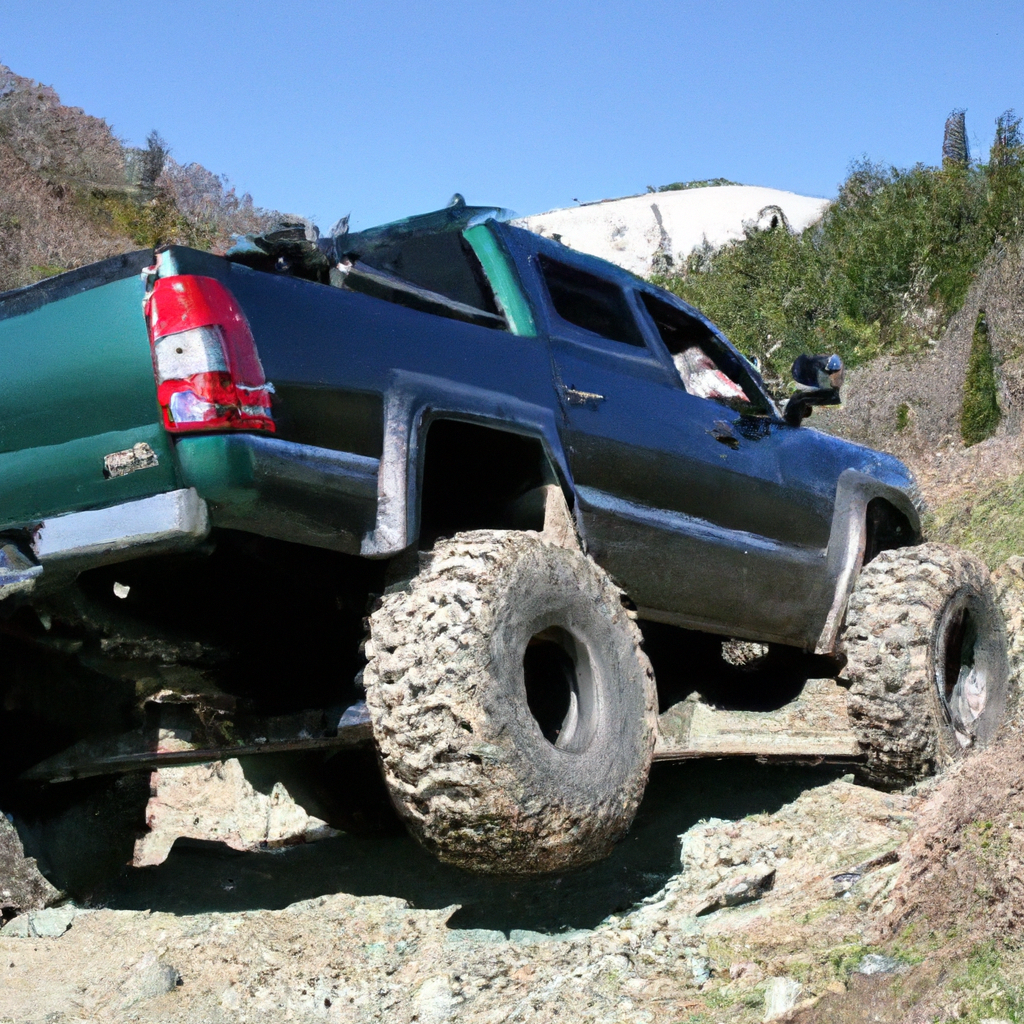When it comes to towing, the choice between using a 4WD or 2WD vehicle can be a critical decision. Understanding the advantages and limitations of each can help you make an informed choice. In this article, we will explore the factors to consider when deciding whether to tow in 4WD or 2WD, and discuss the potential benefits and drawbacks of each option. By the end, you will have the necessary knowledge to make a well-informed decision on which option is best suited for your specific towing needs.
Advantages of Towing in 4WD
Increased traction
One of the major advantages of towing in a 4WD vehicle is the increased traction it provides. The additional power to all four wheels allows for better grip on slippery or uneven surfaces, such as gravel or mud. This can be particularly beneficial when towing heavy loads or when traversing challenging off-road terrains.
Ability to handle off-road conditions
Towing in a 4WD vehicle offers the advantage of being able to handle off-road conditions more effectively. The four-wheel drive system allows for better maneuverability and control on rough terrain, making it easier to navigate through obstacles and maintain stability while towing. This can be especially crucial when towing in remote or rugged areas where conventional two-wheel drive vehicles may struggle to maintain traction.
Better stability and control
Another advantage of towing in a 4WD vehicle is the enhanced stability and control it provides. The weight distribution across all four wheels reduces the risk of swaying or fishtailing while towing, especially at higher speeds. This can result in a smoother and more controlled towing experience, minimizing the chances of accidents or loss of control.
Advantages of Towing in 2WD
Favorable fuel efficiency
One of the key advantages of towing in a 2WD vehicle is the favorable fuel efficiency it offers. Two-wheel drive vehicles tend to be lighter and have less complex drivetrain systems compared to 4WD vehicles. As a result, they generally require less power to operate, resulting in better fuel economy. This can be especially beneficial for long-distance towing or when fuel costs are a concern.
Less strain on the drivetrain
Towing in a 2WD vehicle can also lead to less strain on the drivetrain. Since only the rear wheels are being used for propulsion in a two-wheel drive setup, there is less stress on the transmission, differential, and other components. This can help prolong the lifespan of the drivetrain and reduce the likelihood of mechanical failures or costly repairs associated with towing heavy loads.

Considerations when Towing in 4WD
Potential damage to drivetrain
While 4WD vehicles are designed to handle towing and off-road conditions, there is still a risk of potential damage to the drivetrain. Towing heavy loads over long distances or on challenging terrain can put excessive strain on the drivetrain components, such as the transfer case and differentials. Regular maintenance and inspections are crucial to identify and address any potential issues before they escalate into major problems.
Increased maintenance and repair costs
The additional complexity and components in 4WD vehicles can result in increased maintenance and repair costs. The drivetrain, suspension, and other systems specific to 4WD vehicles typically require more frequent servicing and specialized expertise. This can lead to higher maintenance bills and longer repair times, particularly if any towing-related issues arise.
Potential for transmission overheating
Towing in 4WD mode can increase the strain on the transmission, which may lead to overheating. This is especially true when towing heavy loads uphill or in hot weather conditions. It is essential to monitor the transmission fluid temperature and adhere to manufacturer-recommended towing guidelines to prevent overheating and potential damage to the transmission.
Considerations when Towing in 2WD
Limited traction and control
One of the main considerations when towing in a 2WD vehicle is the limited traction and control it offers, especially on slippery or uneven surfaces. Without the power being distributed to all four wheels, there is an increased risk of wheel spin or the vehicle getting stuck in challenging conditions. It is important to exercise caution and avoid towing heavy loads in situations where traction may be compromised.
Potential for wheel spin or getting stuck in challenging conditions
2WD vehicles may be more prone to wheel spin or getting stuck in challenging conditions due to their limited traction. Towing on loose gravel, mud, or snow can be particularly difficult for 2WD vehicles, as the power is predominantly delivered to just one set of wheels. Careful consideration of the towing environment and use of proper traction aids, such as sand tracks or snow chains, may be necessary to minimize the risk of wheel spin or getting stuck.

Towing Capacity in 4WD
Higher towing capacity in some vehicles
One significant advantage of towing in a 4WD vehicle is the higher towing capacity it may offer. Some 4WD vehicles, especially larger trucks or SUVs equipped with robust drivetrains, are designed to handle heavier loads. This additional towing capacity can be advantageous when towing larger trailers, boats, or other heavy-duty equipment.
Ability to tow in a variety of conditions and terrains
The 4WD capability allows for towing in a variety of conditions and terrains. Whether it’s tackling rough off-road trails, navigating through snow-covered roads, or traversing steep inclines, a 4WD vehicle provides the necessary traction and control. This versatility makes 4WD vehicles well-suited for towing in diverse environments and ensures that towing operations can continue safely and effectively.
Towing Capacity in 2WD
Reduced towing capacity compared to 4WD
In comparison to 4WD vehicles, 2WD vehicles generally have a reduced towing capacity. The drivetrain and design of most 2WD vehicles are optimized for regular passenger use, rather than heavy towing. While they can still handle lighter loads, it is important to ensure that the towing capacity of the specific 2WD vehicle being used is not exceeded to maintain safety and prevent potential damage.
Suitable for towing lighter loads and on paved roads
2WD vehicles are commonly used for towing lighter loads, such as small trailers or recreational equipment. They are well-suited for towing on paved roads, where traction is less of a concern. The reduced towing capacity of 2WD vehicles makes them more suitable for towing tasks that fall within their designated limits and primarily involve regular road usage.
Safety Considerations in 4WD
Enhanced safety features in some 4WD vehicles
Many 4WD vehicles come equipped with enhanced safety features that can contribute to safer towing experiences. These features may include advanced braking systems, stability controls, and traction management systems. These safety technologies can help optimize the towing performance of the vehicle and improve overall safety for both the driver and other road users.
Better braking capabilities in some situations
The weight distribution and traction advantages of 4WD vehicles can result in better braking capabilities in certain towing situations. With power delivered to all four wheels, 4WD vehicles may have improved stopping power and control, particularly when towing heavy loads or on challenging terrain. This can enhance overall safety by reducing braking distance and minimizing the risk of accidents or loss of control.
Safety Considerations in 2WD
Reduced stability in some towing scenarios
Towing in a 2WD vehicle may present reduced stability in certain towing scenarios. The weight distribution, especially when towing heavy loads, can cause the rear end of the vehicle to sag and affect the overall balance. This may result in compromised stability and increased susceptibility to sway or fishtailing, particularly at high speeds or in adverse weather conditions. Proper weight distribution and use of stabilizing equipment, such as sway bars or weight distribution hitches, can help mitigate these concerns.
Limited braking capabilities in challenging conditions
2WD vehicles may have limited braking capabilities in challenging towing conditions. The reduced traction and control can make it more challenging to bring the vehicle and trailer to a stop, especially on slippery or uneven surfaces. It is essential to maintain a safe following distance, anticipate braking situations, and apply the brakes gradually to avoid skidding or loss of control.
Cost Factors in 4WD
Higher initial purchase cost for 4WD vehicles
One significant cost factor associated with towing in a 4WD vehicle is the higher initial purchase cost. 4WD vehicles typically come at a premium compared to their 2WD counterparts due to the additional drivetrain components and engineering required. This higher upfront cost should be considered when deciding between 4WD and 2WD for towing purposes.
Increased fuel consumption
Towing in a 4WD vehicle can also lead to increased fuel consumption. The additional weight, power demands, and drivetrain inefficiencies inherent in 4WD vehicles generally result in reduced fuel economy compared to 2WD vehicles. Towing heavy loads or driving in off-road conditions can further exacerbate this fuel consumption difference. It is important to factor in the potential increase in fuel costs associated with towing in a 4WD vehicle.
Cost Factors in 2WD
Lower initial purchase cost for 2WD vehicles
Compared to 4WD vehicles, 2WD vehicles generally have a lower initial purchase cost. The absence of complex drivetrain systems and the overall simpler design contribute to the reduced price tag. This lower upfront cost can make 2WD vehicles an attractive option for those looking for a more economical towing solution.
Better fuel economy
One of the significant cost advantages of towing in a 2WD vehicle is the better fuel economy it offers. With fewer drivetrain components and less power demand, 2WD vehicles tend to be more fuel-efficient compared to their 4WD counterparts. This can result in long-term cost savings, especially for those who frequently tow or travel long distances.
In conclusion, the decision of whether to tow in 4WD or 2WD depends on various factors such as the intended usage, terrain, towing capacity requirements, and individual preferences. 4WD vehicles offer increased traction, better control, and the ability to handle off-road conditions, but they come with potential drawbacks such as increased maintenance costs and the risk of drivetrain damage. On the other hand, 2WD vehicles offer favorable fuel efficiency, lower initial purchase costs, and reduced strain on the drivetrain, but they may have limitations in terms of traction and control. It is crucial to carefully consider these advantages and considerations when selecting a vehicle for towing, ensuring that the chosen option aligns with the specific towing needs and provides a safe and efficient towing experience.
